Inclusive Computing
This week, computers are supposedly there to help us - but how easy are they to use and program if you’re disabled? We’re looking at how to make computing as inclusive as it can be. Plus, news of the Nobel Prizes announced this week, a new test to find out whether chemotherapy will work for your individual cancer, and the whales that whisper to their young!
In this episode

00:56 - Colon cancer in a culture dish
Colon cancer in a culture dish
Emile Voest, Netherlands Cancer Institute
Colon cancer accounts for more than ten per cent of all cancer cases in countries like the UK. And one important question that bowel cancer patients often face is whether or not to have chemotherapy: because while this is guaranteed to cause side effects, which are often unpleasant, there’s a chance that it might not affect the disease outcome at all. Which means you’d suffer the side effects for nothing. So, to find out who will - and more critically who definitely won’t - benefit from chemotherapy, researchers in the Netherlands have now developed a technique to grow a miniature version of a patient’s colon cancer in a culture dish so they can test out the chemo drugs before giving them to the patient. Chris Smith spoke to Emile Voest from the Netherlands Cancer Institute…
Emile - I'm treating patients with colorectal cancer with multiple lines of chemotherapy. And the frustrating part is that this chemotherapy will give you all types of side effects, but the chances that you are going to be successfully treated, in the sense that you tumour will shrink, is less than 50 percent. So I would like to have a test that identifies patients who will not benefit at all, so we can prevent those patients from undergoing the side effects of chemotherapy.
Chris - Because at the present time, one has to try before you buy if you like, isn't it? You have to try the therapy you find out the hard way if it's not going to work. And by then you've not only suffered all the side effects, you've potentially wasted time when you could have been on a more appropriate or more effective therapy.
Emile - Yes. So the chemotherapy for colorectal cancer is absolutely extending life. So you have four times longer to live with the chemotherapy then without chemotherapy. So people generally want to just try the chemotherapy. But the unfortunate part is that more than half of the patients will not have any benefit yet they will still suffer the side effects.
Chris - What's the alternative that you're proposing we might be able to do?
Emile - With the new technology that comes around, we're now able to grow from an individual patient the cancer, in a dish outside the body. And those little tumours outside the body in the dish are called organoids. And once we are able to do that, you're able to expose those organoids to the same type of treatment as you expose the patient to see which tumour cell was sensitive to a treatment and which one was not.
Chris - How do you make these mini tumours in dishes in the first place?
Emile - When the patient has a metastatic disease, they're either metastases in the liver or lymph nodes. You take a biopsy, and then you can grow with a specific cocktail of growth factors, you can grow those tumours in the dish. In our study about 60 percent of the times we succeeded in growing these organoids.
Chris - How do you know that the organoids you grow are genuinely representative of that person's disease?
Emile - That's work that we've done over the last couple of years and we have looked at that extensively. So we compared material from the tumour of the patient with the organoid, and I would say that the organoids preserve the same features that the tumour in the patient has.
Chris - And you treat these organoids, these tumours in dishes, with the same drugs that you're going to give the patient, but how do you, again, know that the way that drug behaves in the dish is going to recapitulate what's going to happen to that patient?
Emile - Yeah that's the key question. So for chemotherapy, usually you give chemotherapy as an infusion and you have like a peak level in the patient, and then in 24 hours it drops and it's cleared from the body. If you start exposing it in a petri dish you will have an exposure of a continuous amount of chemotherapy. So we kind of invested a lot of time to figure out what is the best way to have the chemotherapy combined with the tumours in the petri dish. And then secondly, because chemotherapy is usually given as a combination of chemotherapies, we also needed to come up with, that we have multiple chemotherapies in the same dish. We figured it out and we were able to, at least for one type of chemotherapy, very successful to identify the patients who did not respond to that chemotherapy.
Chris - And how do you think this is gonna make a difference clinically?
Emile - Yes. So there are two ways to approach this problem. So one is to see if you can use the test to identify patients who will respond. That is a fairly difficult question because responding can mean that it's remaining stable or that it shrinks. So there are a lot of grey areas. The tumours that would grow despite the chemotherapy, that means you would identify the patient who had absolutely no benefit. And as long as we do that with a high level of sensitivity and specificity, if we sit down with the patients we can tell them and say, you will not respond on this chemotherapy. So we need to find alternative choices.
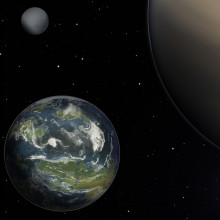
06:04 - 2019 Nobel prize: physics
2019 Nobel prize: physics
Ben McAllister, UWA
Recently, some of the world’s biggest scientific brains have been receiving telephone calls from Stockholm. Those calls are to announce that they’ve won one of science’s highest accolades: A Nobel Prize. So we’ve asked three scientists at the beginnings of their research careers to tell us who’s won what in their respective fields. Up first, to tell us about the Physics Prize, from the University of Western Australia, in Perth, particle physicist Ben McAllister…
Ben - The drive to discover more about the nature of the Universe has long been one of humanity’s most fundamental instincts. So it’s no surprise that this year’s Nobel Prize in Physics has been awarded to three people who have devoted their lives to a deeper understanding of the cosmos.
The prize was split into three parts - one half of it going to James Peebles of Princeton University, and the other half being split between Michael Mayor and Didier Queloz who were both at the University of Geneva at the time of their Nobel work.
Peebles was one of a team involved in the discovery and understanding of the Cosmic Microwave Background - the leftover radiation from the very birth of the universe, which permeates space and is detectable with radio telescopes today.
Comprehending the Cosmic Microwave Background led to a significant leap forward in our understanding of the early universe, specifically a process known as inflation, which occurred shortly after the Big Bang, where the universe expanded extremely rapidly from its original tiny size.
Mayor and Queloz, on the other hand, have been more experimental, and have found some truly incredible things. For hundreds of years, scientists suspected that distant stars could have planets orbiting them. These supposed planets became known as exoplanets. But, until relatively recently, no planets outside our solar system had ever been detected.
Mayor and Queloz exploited that fact that the gravitational pull of an orbiting planet pulls slightly on its parent star, making it “wobble”. This creates tiny - but detectable - shifts in the spectrum of the light that they emit.
By searching for those small shifts, Mayor and Queloz proved the existence of planets orbiting distant stars. Using this and other techniques, astronomers following in their footsteps have since detected thousands more exoplanets.
This was a remarkable discovery, as it suggested the possibility of Earth-like planets orbiting Sun-like stars elsewhere in space, which has massive implications for our understanding of our place in the cosmos…

08:44 - Absurd answers to common problems
Absurd answers to common problems
Randall Munroe, xkcd
Moving house can be a pain. So what if, instead of moving all your possessions, you just moved your house? Hmm.... Adam Murphy got to hear all about absurd answer to common problems, whilst chatting with one of his favourite science authors, Randall Monroe.
Adam - XKCD is an online comic written by Randall Munroe. And the stick figures that fill its pages musing about science and technology have something of a cult following - a following that I count myself among. So I was pretty excited to get to interview Randall while he was on tour for his new book, ‘How To’. During his brief stop in Cambridge, he took a break from signing copies at a breakneck speed to sit down in a lecture hall in the Department of Chemistry an hour before his sold-out talk to chat about his new book.
Randall - This is sort of a guide to bad ideas for how to do things. It's not a particularly useful self-help book. I'm the sort of person who's always coming up with really impractical ideas, but then I sort of want to see, “could that work?” A lot of the time it's not easy to tell for sure whether an idea is bad or not, and the process of going through it and analysing it to try to figure out, “what would happen if you really tried to move your house with helicopters instead of having to pack moving boxes?” The process of analysing it can sometimes teach you something that might be useful for an actual problem later on. And even if it's not, it's sometimes just really fun to see how an idea would go wrong. And so with this book I've taken a bunch of common everyday problems and found really interesting research that might be in some sense helpful for solving them, and then looked at what would happen if you tried to apply them, which is often complete disaster. But it's a fun disaster!
Adam - You, for one of the chapters in this, speak with Chris Hadfield. And you threw some really bonkers questions at him he just kind of sailed through. What was that like?
Randall - Oh, that ended up being I think maybe my favorite chapter in the book. He's an astronaut and a test pilot, he's flown over 100 different aircraft, and so... but I was gonna throw these weird situations at him, and ask him, you know, “what would you do if you were locked on the outside of the airplane and had to crawl around pulling on the flaps with your hands?” Or, “how would you land on a submarine?” And my plan was to ask him the easiest questions, and then work my way up through the rest of them until he hung up on me. I should have realised, maybe, that trying to fluster a test pilot by throwing unexpected and extreme scenarios at them without warning may have been a flawed plan. Because everything I asked him, he just answered with no hesitation. He just answered, “oh, well what I’d do is I’d, if I tried to land on a ski jump I would come around and come up from below, but you have to watch out because the stands are really high and they block your likely landing approach.” I was expecting to argue with him about whether or not the scenario even made sense, but he just answered my questions. So I was surprised, but also delighted because it really ended up being I think my favorite chapter.
Adam - So what's your thought process for coming up with solutions to a problem? Because I can say, for example, I'd never have thought of using tectonic shift to power my house .
Randall - When I'm thinking about like what is power, what is energy, the interesting thing about generating power is that it's really easy to… people come up with all kinds of weird ideas, or ideas for how to produce power. Like, what if you put solar panels on top of your house? Or what if you put solar panels on your car to power the car engine? You could lift weights and then have the weights descend and produce power. A few of those are good ideas and a few of those are bad ideas, and you can calculate which one it is, which is really fun! Like there's an objective answer, almost. There's a proposal for a spaceship that was powered by nuclear explosions, Project Orion, that uses the energy from the blast to disintegrate a heat shield and produce thrust that way. But then there's, at the other extreme end there's things that move incredibly slowly but carry a huge amount of force. And in principle you could also use those for power. So I was thinking like, well, there are these tectonic plates moving, and they're moving very slowly but they have this immense force behind them. It's not really momentum, it's just they're being driven by forces under them that we don't totally understand. And so I'm thinking, if you've got force, it's still being exerted over a distance, that equals energy. And so I thought, “well can you get that energy somehow?” And the answer is pretty much no. But I tried to lay out, you know, “here's a way you might try to do it, but it would cost you so much money to build the structure, and so much land to generate just enough power to power a house, that it would take you something like 40 million years to recoup your investment and get enough power where it was worth it. But after that 40 million years then it's all money.
Adam - What would you say the value is in absurd information?
Randall - I think that absurd information is useful because you don't always necessarily know what is going to be absurd until you've thought about it, until you’ve worked through it. Like NASA's method for landing Curiosity on Mars by using a hovering sky crane that would float above the surface on rockets while lowering the robot on the end of a long rope, effectively. Definitely sounds like a ridiculous absurd idea - but it turned out to be the best idea they had, and it worked. And so you never really know what stuff is going to be absurd. And then even if an idea is absurd and you work through it, and you're like, “no, this is actually a bad idea,” knowing that is useful and will often teach you something in the process that could then be useful, and maybe coming up with a better idea later on. And if nothing else it's just kind of fun.
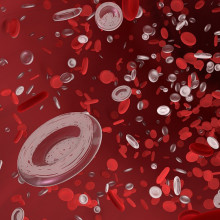
15:48 - 2019 Nobel prize: physiology
2019 Nobel prize: physiology
Eva Higginbotham, Cambridge University
Time for another Nobel Prize explainer. Here's Eva Higginbotham from Cambridge University...
Eva - Oxygen is absolutely essential for human and animal life because our cells use it to convert food into energy. So we’ve evolved a lot of different mechanisms to make sure we have enough oxygen in our blood, starting with just breathing faster when running for the bus or at the gym.
But, our bodies are also excellent at sensing when we’re in a low oxygen environment in general, like up a high mountain, and then adapting in response. The 2019 Nobel Prize in Physiology or Medicine has been awarded to the three scientists that figured out how your cells sense and adapt to environments with different levels of oxygen. Gregg L. Semenza, Sir Peter J. Ratcliffe, and William G. Kaelin Jr each independently figured out different pieces of the puzzle, and it comes down to a few proteins, a few genes, and some oxygen-sensitive enzymes.
These enzymes behave differently in low or high oxygen environments, and act on a protein called hypoxia inducible factor, or HIF, which is produced in our cells. Now, when there’s plenty of oxygen around, HIF is produced but then labelled for rapid degradation by the aforementioned enzymes. But in a low oxygen environment HIF isn’t labeled, and instead gets busy binding to a host of genes that promote adaptive responses, like the gene for the hormone erythropoietin, or EPO, which makes you make more red blood cells.
Oxygen-sensing is a fundamental part of healthy human and animal life, but this work has even influenced drug-development for patients with diseases like chronic renal failure, who often suffer from anemia caused by low erythropoietin expression. It’s also shaped plans for novel cancer treatments, as one of the important steps in cancer development is the tumour stimulating the production of new blood vessels, and that’s controlled by the oxygen-regulated machinery these new Nobel Laureates discovered.
And, for me, as a PhD student in biology, I feel like the process of discovery here is such a nice example of how science works when it’s at its best: each scientist working hard to contribute knowledge to a field in these little segments over the years, adding piece by piece, until the picture of exactly how a process works becomes clear. It’s a story in science that all scientists can aspire to.
So we can all breathe easy knowing that Semenza, Ratcliffe, and Kaelin have been justly rewarded for their breath-taking work.
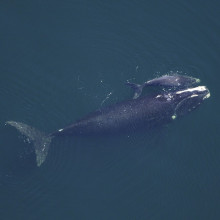
18:24 - Whales whisper to their babies
Whales whisper to their babies
Susan Parks, Syracuse University
Whales are some of the biggest animals on Earth, and when they call to each other, their songs can travel through the ocean for thousands of miles. But they’re not so large when they’re babies, and that’s when they could get eaten by predatory sharks or killer whales. This seems to be the reason behind a newly discovered, “quiet” form of whale call, that North Atlantic right whale mothers use when talking to their babies. Susan Parks, who made the finding, told Phil Sansom about these ‘whale whispers’...
Susan - We were studying communication of North Atlantic right whale mother-calf pairs and we were curious whether they would produce the normal louder sounds that these whales use for communication. So what we found was that they actually switched to producing a much quieter, sort of whisper type sound, to essentially hide from predators.
Phil - They’re like special sounds that you'd only say to your little kid then.
Susan - Yeah. I think just quiet little whispers to the baby.
Phil - Tell me a little about these whales, because I'd never heard of these before.
Susan - Right whales are one of the most endangered species of whales. They're only about 420 left in the world. They're baleen whales, which means they're filter feeders, so they swim really slowly through the water with their mouths open. They're not the most beautiful of whales. We can tell them apart because they have individually distinctive patterns growing on their head of finger like material, and these growths are covered with whale lice that are light in color and so they sort of make that pattern on their head stand out
Phil - Weird. Are they absolutely huge?
Susan - They are very very large, yeah. We go out in small boats and it's sort of one of the inspirational parts of my job when you have a whale swim under the boat and they're longer and wider than the small boat that you're on.
Phil - How many whales did you actually measure?
Susan - We were able to get tags on 16 whales to do the comparison.
Phil - Wow. Only 16.
Susan - That was how much we could get over six years of effort. North Atlantic right whales in particular have been having really sort of a hard time with reproduction in the populations, so very few calves have been born in the past few years. Most right whales that are killed now are accidentally killed by human activities. So they get hit by ships or they get entangled in fishing gear, and unfortunately mother-calf pairs seem to be a larger proportion of the individuals that are getting killed, to the point that two years ago there were no calves born for the entire species. And so it makes it really challenging to go out and collect data from mother-calf pairs when there are no calves.
Phil - And if they're so rare, how do you go out and find them and then listen to their sounds that they're making.
Susan - Yeah that's one of the biggest challenges in studying North Atlantic right whales - finding them in the first place. Where we were doing our study, which is off the states of Georgia and Florida in the United States, they're looking using an airplane to try to find the right whales in the area to help with their conservation, letting us know when there's a mother-calf pair in a particular area so we can take the boat out to find them.
Phil - And then what do you do once you get the boat out there?
Susan - We were using a small suction cup tag and we'll slowly approach that mother-calf pair and place the tag on the back of the mother. They spend a lot of time sleeping or resting and so we can approach them slowly with a vessel.
Phil - That's so strange that you're sneaking off on whales with suction cups to stick on their backs.
Susan - Yes it is a very strange image if I think about it, that what we do is that we have to very quietly sneak up on an enormous animal in the ocean and put a very small tag on their back.
Phil - What do the tags actually do?
Susan - So the tags record sound so we can hear the sounds that the whales make. And also the sounds that are in the environment around them. Right whales are really boring if you want to listen to a lot of whale sounds. In many habitats we'll get as low as one or two calls an hour. What we saw is that the juveniles and the pregnant females made a lot more of these louder long distance communication calls, and made very few sort of soft or quiet sounds. Whereas for the mother-calf pairs it was completely inverted, 90 percent of their sounds were these very very quiet, almost whisper-like sounds, and only about 10 percent of the sounds they made were these louder calls.
Phil - It's not what you expected, is that really strange?
Susan - What we expected actually is just to find that mother-calf pairs either didn't call very much at all or that they made the normal calls at a quieter level. So I was very surprised by essentially discovering this suite of sounds, these grunts and sort of pulse sounds that the mother-calf pairs were making, because it was something that we had never recorded before from right whales.
Phil - Why would they do that?
Susan - So right whales when they're adults really don't have any natural predators. The only time they're really vulnerable is when they're first born. So in the first few months of life, a young calf right whale is vulnerable to predation from killer whales and sharks. The only way they can hide from predators is to reduce their sound production. The water that they're in, you can't see very far because there's so much sediment in the water, so predators can't be finding them through vision.
Phil - And what are they saying to them when they're doing these grunts? Are they going “Oh, be quiet, there might be a killer whale nearby” or something?
Susan - My impression from the recordings is really that they're more just sort of keeping track of where the calf is, or letting the calf know where the mother is. They don't seem to be made in a particular context or a particular grouping of the sounds. They're sort of scattered throughout the recordings. For me what was most surprising is that it didn't even occur to us as scientists that they would do this sort of huge switch in the types of sounds they make. But I have a son myself and I know that the sounds that I would make to soothe him are things that I would never have made before he was born.
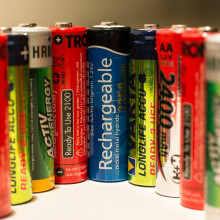
24:21 - 2019 Nobel prize: chemistry
2019 Nobel prize: chemistry
Jenny Gracie, University of Strathclyde
Time now to hear about the Chemistry Nobel Prize. Here's Jenny Gracie from the University of Strathclyde...
Jenny - The Nobel Prize in Chemistry was awarded to John B Goodenough, M. Stanley Whittingham and Akita Yoshino. Each of them had a major contribution to the creation of the lithium ion battery, something we probably all have with us right now.
These types of batteries have been around for decades and although not a recent invention, it is now with their global application that this research has been recognised. Together, the laureates managed to tame lithium - a highly reactive element. They applied it in a controlled chemical cycle which is able to store and release energy on demand. The inside of all batteries contains three basic parts, a positive electrode, a negative electrode, and a liquid that separates the two. And this is known as the electrolyte.
It was the advancement of the battery design that won the scientists the Nobel Prize. By using lithium, which is the world's lightest metal, they were able to pack many atoms into the battery design but keep the device lightweight.
Lithium has three electrons and it will very easily release one to become a positively charged ion. During discharge, the lithium ions move from one electrode through the liquid electrolyte to the other electrode. This process is reversible and this is how we can recharge the batteries time and time again.
The reason their design is so groundbreaking is the materials chosen for the electrodes. They use cobalt oxides and petroleum coke. Both materials have a layered structure with many gaps which allows the free movement of the lithium ions. This winning combination results in a battery with a high voltage. And this is a major triumph over the previously used lead acid and alkaline designs.
The impact of the battery design in society is huge. We use them everyday in our electronics to work, communicate and even make transportation more eco-friendly. They're also employed in many life saving medical devices such as pacemakers and defibrillators. Lithium ion batteries have revolutionised the world we live in and catapulted us into a new technological era. This exciting opportunity is what makes this year's prize a very well-deserved award.

28:36 - How accessible is technology?
How accessible is technology?
Adi Latif, AbilityNet
Today, we’re analysing the inclusivity of tech. How easy to use are the apps and websites that modern life demands that many of us use every day? We’ll be seeing what’s fit for purpose, what needs to change, and how science can help. With us is Adi Latif who works for AbilityNet, a charity that supports people living with disability to use technology. Adi is blind, and he came here today by train and had to book a ticket online. First up, Chris Smith asked Adi, how do you go about booking a train ticket online if you're blind?
Adi - Well it's amazing now as a blind person. I have an iPhone and I'm able to access most of the features on the iPhone. I turn on something called VoiceOver - It's a setting in the phone. And it sounds really weird, but as I move my finger over the screen things are read out to me. And I have it really fast so it talks really fast, and that allows me to use apps on the phone, and that's how I tried to book my train tickets.
Chris - Now we asked Adi to document his experience and record his interaction with the website on which he booked his ticket. Here’s how he got on.
Adi - Open ‘thetrainline’.
VoiceOver - Trainline. Help. From: Departure Station. Text field: K I - I N - N G. King’s Lynn. King’s L-- King’s L-- King’s L-- Kings Norton. Dalston Kings-- London Kings Cross. Seven Kings. London Kings Cross.
Adi - London Kings Cross going to Cambridge.
VoiceOver - Next field: Cambr-- Cand-- B F Q. W Q. Cambr-- Cambr-- Cambr-- Cambrills. Cambridge North.
Adi - Yes! There we go.
VoiceOver - Open return. Outbound. Saturday 12th October.
Adi - Saturday…
VoiceOver - Sunday 13th October.
Adi - Sunday 13th…
VoiceOver - Find times and prices.
Adi - Fantastic. So up to this point this has been quite event-free. Let’s see what happens next. So live times and tickets...
VoiceOver - Close button.
Adi - Oop, it’s doing something.
VoiceOver - Mobile tickets are now available to Cambridge North. No more queues or fumbling for tickets.
Adi - No more queues or fumbling for tickets. How does it know I’m always fumbling for tickets?
VoiceOver - OK. Got it.
Adi - OK, got it.
VoiceOver - How to get your ticket. Heading.
Adi - How to get your ticket.
VoiceOver - Collect from station.
Adi - Collect from station.
VoiceOver - Read from a ticket machine using a payment card. Button.
Adi - No.
VoiceOver - Ticket collection info. Button. Collect from station. Collect from station.
Adi - I thought it said no fumbling for tickets and now it’s telling me that’s the only option…
VoiceOver - Total amount to pay: 12.20 British pounds.
Chris - Well you made it... was that a good interaction? Was that a good day?
Adi - It was a typical example of something kind of working, and then me getting stuck. So as you can see, or listen, I got so far and I wasn't able to get a mobile ticket. And then when I got to the end it wouldn't actually allow me to book. I put in two different cards and it just wasn't working for me.
Chris - I find it hard enough, Adi, to buy stuff online, and I can see all these buttons and boxes I'm supposed to tick and click. Does it not make you exquisitely nervous when you're thinking, “I’m parting with credit card details onto a webpage that I can't see, and I don't really know what it's doing with any of the data”?
Adi - Weirdly enough if I get that far, if I'm actually able to give them my money, I'm the happiest person in the world! Because over 90% of apps or websites don't work for me. So I'll get so far, I’ll have filled in a form to book a flight or to buy something, and I get to the end and the button doesn't work for me. So if I'm able to give someone my money then I'm really happy to do so.
Chris - I find it really surprising and quite frankly shocking. We invent computers, we invent computer programmes, and ostensibly this is all about making life better for us. And we've never had it so easy in terms of being able to make something and mould it, and turn it into something that we need. And yet we seem hell-bent on actually making computers the masters and we're their slaves. And when it comes to people who actually have disability, we make them even harder!
Adi - And I think the digital world - and this is the most exciting thing - that digital world inherently is barrier-free. And it's just unfortunate if we don't look at a methodology such as inclusive design, if we don't think before we make something that, you know, “will this meet the needs, is this fit for purpose for society,” then we unfortunately create these barriers that are just unnecessary.
Chris - What success stories have you come across though? In what way have you seen your life change as a blind person thanks to the digital revolution that we've had in the last couple of decades?
Adi - Well there's so many things that a blind person can do. Twenty years ago I couldn't read the papers, I wouldn't be able to flag a taxi off the street in a train station, I wouldn't be able to find out what platform my train is leaving from, so there are just some examples. And all that is possible now. I’ll load up the Uber app and I can book my taxi in the train station; I can refer to the app that tells me what platform the train's leaving from; and obviously we've gone online with newspapers and books, so I can have access to all that information now. So in a way technology has given me what medical breakthroughs couldn't: it's given me independence, it's given me access to information. That's why it's really exciting.
Chris - If it didn't quite work out then Adi, how did you get here then? Because you fell down at the last hurdle, it wouldn't take your money.
Adi - Absolutely. So it didn't take my money, so I decided I would just go to the station the old-fashioned way and find some assistance in the station, and have someone help me use a machine. And as you can see, the difference there: there's so much relying on other people just because the digital was not working for me.
Chris - Can I ask you something about other aspects of everyday life? Because we heard something relatively straightforward, in theory: buying a train ticket. Increasingly governments and so on are pushing us online for everything. Pensions. Tax returns. Benefits and so on. What's the experience with things like that, from your perspective? Do they work well?
Adi - They're getting much better now. There's a lot of regulation now, recently there's a regulation that came out, the public sector’s Website and Mobile Applications Regulation, so it really states that public sector services, digital services, have to be accessible. And pretty much online government services are pretty good. However there are a lot of challenges; I've not used a lot of the services that you've mentioned, so I don't have firsthand experience, but usually there's a lot of guidance and a lot of accessibility considerations taking place with government. With the NHS, on the other hand, I'm really thrown into the dark ages when it comes to the NHS. Everything is paper-based, I get my prescriptions on paper, get important results from the hospitals on paper, so all the independence I’ve received using technology is stripped away. And what's more important than managing your healthcare? So that's really an area that really would benefit from being accessible.
Chris - And dare I ask, have you had a look at nakedscientists.com to see how we're doing? Is our website any good?
Adi - Do you know, I have not had a look. But I'm so thrilled with the show, just being here today and listening to the exciting stuff on the show, I'll definitely have a look and get back to you on that.
Chris - Yeah do, and if we can improve it... because obviously our programme is full of audio. It's a website that actually, lots of the content is audio, but we transcribe everything with the intention that actually screen readers and things should be able to either play them to people or read them out to people. I'd be just really interested in your appraisal.
Adi - Absolutely. I will be gentle but I'll be honest.
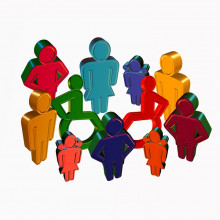
Inclusive design
Colin Clark, OCAD University, Toronto, Canada
How can technology be made to work for everybody? Katie Haylor spoke to Colin Clark from the Inclusive Design Research Centre at OCAD University in Toronto...
Colin - One of the problems in conventional design today, is that users are often generalised and stereotyped, and that means that if you're on the margins for, perhaps you have a disability that means you interact with the computer in a different way, you're often seen as an outlier, an edge case, and often left out of the design process. So often designers they say “well just design for the 80 percent who could use that feature.” And so that other 20 percent of people who might be left out by a design decision or a user interface. But what we often see is that it's people with disabilities and people who interact with technology in a different way who end up being the ones excluded from that prioritisation process, and thus unable to use the technologies we have today. So for me inclusive design is really about finding ways for people who have been marginalised by technology to actually participate in the creation of new alternatives to that technology.
Katie - Can you give us a few practical examples of what kinds of work you guys do in your lab?
Colin - Sure. One example is called UI Options, and that's a browser plugin that you can include in any website. And what UI Options does, is it gives users a way to change the user interface in various forms to be able to suit them better. So it lets them make things bigger, change the contrast and the font of a page, but more deeply also gives them different ways to navigate and perceive the page. So it has built in text-to-speech, it can generate a table of contents so you can see a page at a glance, for many people who are using assistive technologies, it's very slow and cumbersome to be able to navigate the Web. And with our UI Options plugin, the idea is to experiment with, and look at different ways of creating software that was built from the beginning, right inside it, to be accessible and adaptable, whereas today's assistive technology is often tacked on from the outside, separate from the software and thus able to do less in terms of giving users the power to change and adapt their software.
Katie - Why isn't design inclusive at the moment by default?
Colin - It's a good question. Probably the reason designers struggle with inclusion is, we don't have the methods and the techniques as designers, to engage deeply with our users and to treat them as more than just consumers, but actually participants in the process. So we need new ways to design. And we also need new technologies. Right now, a lot of software development is about boxing and hiding away the internals of the software. But if you're someone who needs a different presentation, or a different view on the software, opening it up more and providing different kinds of ways of accessing the inside of software would enable a much more flexible and personalisable applications to be created. And of course everyone benefits from the ability to have some control over how their software works, to make themselves feel at home or you know, customise it to suit them.
Katie - There is such a vast range of accessibility requirements depending on your personal circumstances. How difficult can inclusive design be when we're looking at technology? Because I imagine there's a whole spectrum of complexities in terms of need.
Colin - There are. I think inclusive design can be very difficult, but also it's a challenge to make software better and more flexible. So I think one of the ways to balance the complexity is not to take all the responsibility on yourself as a designer, or as a technologist, but instead to bring in people with diverse backgrounds and lived experience of disability into the design process, so they can help make those decisions with you.
Katie - How mainstream and widespread is the concept of inclusive design? How integrated is it into mass technologies, and what do you think are the barriers to improvement?
Colin - It's becoming more widespread, and you know 20 years ago nobody had heard of the term. Now increasingly we're seeing large companies, for example Microsoft, who has adopted our inclusive design framework. That said there is a long way to go. We're still very much in a model where expert designers lead, and users simply use. So I think it involves changing the way we design and make decisions, changing the way technology gets developed. That might even mean different programming languages to support this more open and participatory model. And then of course I think it also involves us questioning the dependencies and the relationships we have on big technology platforms, and starting to look at what options are available in open source, and in other collaborative and cooperative models, to build technology that fits us better than just what large companies and platforms think we need.

41:31 - Tangible programming
Tangible programming
Cecily Morrison, Microsoft Research Cambridge; Theo and Elin
So how can technologists put inclusive design into practice? An initiative at Microsoft in Cambridge is trying to bring computer programming within reach of young learners who cannot see and were previously excluded. Mariana Marasoiu reports...
Mariana - Programming is about sending instructions to a computer, telling it what to do. A simple such instruction may be "play the musical note C". A more complicated instruction could be a loop "repeat three times playing the musical note C".
And by putting instructions like these ones one after the other, we can eventually create the user interfaces that you're interacting with everyday. A programming language is the way in which we give the computer these instructions. It commonly involves typing letters on a screen with a keyboard or using the mouse to drag and drop instructions and put them one after the other to tell the computer the order in which they need to be executed.
Considering that computers for many of us are so visual, how can you even create code if you can’t see? To find out, I spoke with Cecily Morrison from Microsoft Research Cambridge.
Cecily - Code Jumper is a physical programming language for teaching children ages seven to eleven basic programming concepts and computational thinking, regardless of their level of vision. And it was inspired by the fact that we were working with blind and low vision children as part of our outreach activities and we realised that there were no ways for them to learn to code at this young age alongside their sighted peers.
Mariana - Cecily and her team set out to make a tangible programming language but realised quite soon that the real experts in creating the best tactile experience were the potential users. Step forward a group of four blind kids who were invited to join the design team. I spoke with Theo, one of the young designers, and his mum as well.
Theo - I’m blind, and for quite a long time now I've been working on this project with Microsoft called Code Jumper.
Elin - Hi my name's Elin and I'm Theo's mother.
Theo - One of the most exciting things I created was having a whole new programming language, a whole physical way to be able to introduce these young blind people to coding without them having to fight with a half inaccessible language on a school laptop.
Mariana - So what does the kit actually look like? Back to Cecily.
Cecily - We have a number of pieces, each of these are differently shaped pods that the kids can feel. They're also visually distinct, because many children who are blind or low vision may be using vision alongside their tactile skills. And of course their sighted peers are often very much using vision.
So we have a hub here. This is the start of all our programs and then we have a number of pods that we are going to connect to create a program.
Mariana - Right. That's the basics. But how, I asked Theo, do you actually use Code Jumper?
Theo - Well basically you have to connect pods together using the plugs which are on a wire coming out of one end, and connect them to the socket at the other end of the next pod.
Some of the pods are “play”, some of them are “pause” and some of them are “loop”. So the “play” pod is basically an oval shape. A 3D oval. And on the top it's a flat surface which feels shiny and different to touch. And there are two dials. One feels like a ridged doughnut with a hole in the middle, which is the plug. And the other feels like a ridged pot with ridges around the edge and then a hole in the middle again.
The “loop” pod basically has two big wires coming out of it. The longer one is the one you connect the end of the loop to. And the indented track into the pod, which goes between the start and end holes of the pod.
Mariana - These pods do different things within the program, and they each have a distinct look and feel. And it's not just a language for the visually impaired.
Cecily - We've specifically designed it to be inclusive of children who are blind and low vision but not exclusive to them. We know that most blind and low vision children are in mainstream schools and they don't want to sit in a different room with their own separate technology. They want to code with their friends. So this was something that they could all do together. And that's why we were very careful to keep the tactile information and the visual information the same. So whether you're accessing it with a tactile way, or a visual way, you can all do it together, and we often have Code Jumper used with at least two children at once.
Mariana - And as Theo gave us a short demo of what the kit can do, I asked his mum Elin how she felt about his involvement in the design process.
Elin - Theo being a part of the development was massively positive and exciting and it's turned into I think about a four year project and really proper thorough involvement, in a real solution to a problem that Theo had experienced for himself.
So he had this huge disappointment of not being able to join in with the Scratch class even though he was really excited about computer programming. And then he got to be hands-on with finding a solution and developing it and actually some of his friends now who are blind get to use it. And that's pretty empowering and exciting.
Mariana - Code Jumper is intended to take kids through the primary school computer science curriculum, but what happens after that?
Cecily - So this is meant for children ages seven to eleven. So that will start them at this notion that a program is a sequence of commands, and we can take kids all the way up to the end of the primary curriculum which is around data flows. And what that means is things like variables.
So when kids start, they move these dials to create the sounds and durations that they want. But as we start to get into more complex programming concepts, we want to do that, what we call programmatically, what that means is it happens automatically. And these are the things we would expect them to learn.
From the little research that we have in the space, we know the importance is not creating very long code, but really understanding your code. And physical programming is restricted anyway, but that's a restriction we haven't tried to overcome because we believe it's useful educationally to keep kids focused on short program flows.
In the UK curriculum, you would expect a child to move on to a text based language in secondary school. That's exactly where we want kids to go. We don't want them physically programming their whole lives, we want them moving on to the tools that they could use professionally. And we support that transition. When you press the “stop” and “play” buttons on the hub, you can actually listen to your code. That's the way you're going to hear code when it becomes a text based language.
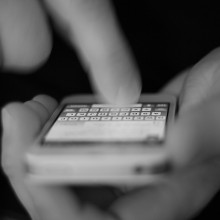
48:54 - Improving predictive text
Improving predictive text
Per Ola Kristensson, University of Cambridge
Let’s take a look at a technology that most of us are very familiar with - typing. But not everyone can type; and some people can’t move anything other than their eyes. Per Ola Kristensson is from the University of Cambridge, and works on text entry systems to help in these situations. Chris Smith spoke to him...
Per Ola - What people use today is called eye-typing and the way it works is that you have a display in front of the user and the system is tracking your eye gaze and showing an indication of where the system thinks you're looking at on the screen. And you move that eye pointer by looking at the desired key and then you have to look at it for a very long time. And the reason you have to look at it for a very long time, called the dwell timeout, is because the system has to be sure that you actually want to type that key, as opposed to just looking at that key. And that’s just very very slow.
Chris - It's very laborious isn't it, because we sent Mariana to come and have a go with a system you mocked up to show how this actually works. We've got a recording of her having a go with it.
Mariana - Tried to type H but it got U. That's fine. Go over E, I went for I apparently. How do I delete a bit? Okay, let's start again. Go over the H, that picked Y, let’s see if prediction works. E... L... Oh, I can see “Hello” as the first prediction! It clicked it twice. Do the N. A. K. E. “Naked” appeared as the first prediction! S. C. We have “science”. Ah, that picked E. C. I picked V again, not very accurate at this last word. I. E. N. “Scientists”. “Hello Naked Scientists”!
Chris - Now that’s someone who actually has a PhD in Computer Science, clearly a bright person equipped with the technology that we would give someone with a disability to try and type words and it took her actually six minutes, we cut that down a bit. Clearly that's not something that people are going to end the day feeling anything other than intense frustration. So what can you do, Per Ola, to make this a more intuitive experience, and a more efficient experience for people who need to use gaze tracking to type?
Per Ola - The fundamental problem is that it's just not natural to have to stare at a key at a time, because the eyes are sensory organ, it's not a control organ, and the way we write... when we want to write, we think in terms of phrases and sentences and words, not in terms of inputting individual letters. So the way we changed the system is we basically got rid of this dwell timeout altogether. So to write for instance “the cat”, you look in the vicinity of the T key, you don't even have to look at the T key, and then you look at the H key, the E key, the C key, the A key and the T key. So you spell out “the cat”, without going to the space bar, and then you just look at the text area and the system will automatically translate that sensor data into “the cat”.
Chris - So you're using statistics, you're basically monitoring where the person looks and working out the possibilities of what they could want to say, and then refining that statistically and then that means that you give them a range of options to choose from but it's much quicker. It's like predictive text on steroids I suppose and it doesn't mentally fatigued them, like I think Mariana probably would've gone nuts if we tried to make her do that for much longer.
Per Ola - You can focus more about the actual process of writing and what you want to communicate rather than fiddling with the interface.
Chris - And how many words per minute can you realise with your system compared to say the industry standard that people were using?
Per Ola - In a controlled lab setting, you can type at about 46 words
Chris - With your system?
Per Ola - Yeah.
Chris - That’s very fast actually.
Per Ola - Which is more than twice than the records systems ever measured for a standard eye typing. But that was captured under very unrealistic circumstances. In reality it depends on the nature of the user and how good their eye control is, because often some of these users have additional issues what makes actually even eye typing very difficult. But my experience is from talking to users who have used this system is that you can typically double the entry rate.
Chris - Even so, I mean that's pretty impressive isn't it. It is commercially available now, the system you've just described isn't it?
Per Ola - I worked with Tobii Dynavox for about six years, and it's actually a part of our free software update for their communicator system for users who use these type of eye tracking systems.
Chris - But in your view then, what are the big gains that we can make next. Where are we going to go with this technology next in order to make life better?
Per Ola - What we need is more sources of information. The reason this kind of system works at all is because we are very predictable as humans in terms of what we want to communicate in terms of text and that predictability can be captured in a statistical language model. But it can only go so far. The next step we need is to take into account other context. Like your G.P.S. location, who you’re trying to communicate to, the time of day etc.
Chris - So just integrate more information together which will help you make better predictions about what that person is trying to do. And that means that then it makes it a more fluid, more rapid experience for them.
Per Ola - Absolutely. Because what you can do then is you can predict whole sentences. And if you can go to the sentence level, that's when you can get a massive boost in performance.
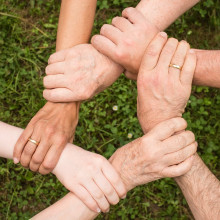
54:37 - Reflections on accessible tech
Reflections on accessible tech
Adi Latif, AbilityNet
Katie Haylor asked AbilityNet's Adi Latif for his thoughts on the Inclusive Computing show...
Adi - I think it's really exciting. You know if you look at the programming, for example, that's something that I was not able to do at school, there was just no means for me to do it. And it just sounds so amazing using all your senses to do something like programming, and it just shows it's not just obviously for blind children, they're just makes it exciting for other people. So I'd love to try that even though I'm older than 11 years old. And looking at the eye typing, the typing just by using your eyes and doing it fast, I mean obviously it makes the lives of disabled people much better and makes them more operational. But you can just imagine the application of this type of technology to the lives of everyone. You know I can just imagine wearing smart glasses and sitting in a meeting and texting with your eyes, not letting people know that you're texting... So all this kind of innovation, they're for disabled people, goes into mainstream at some point, and I think that's really exciting.
Katie - It does seem like one of the messages we've been hearing about in the show is more inclusive design is just better design in general. Would you agree?
Adi - Absolutely. If you bring people in front of you who have more challenging needs to help you look at a problem from so many different angles, you end up making a solution from so many different angles, a solution that you may not have envisaged in the past. So the end result is much better. And if you just look at the physical world, if you make a ramp into a building and that would definitely help someone in a wheelchair, but you have a parent taking a pushchair up there, you have someone with deliveries going up there, you have someone who may have twisted their ankle the weekend before. So designing for people who are disabled really I think helps everyone in the long run.
Katie - And how about the wider public because we're generating lots of digital content these days, is there anything we can do to be more inclusive?
Adi - Absolutely. I think before you make any sort of digital content, before making a website or an app, just ask yourself the question: is this meeting the needs of our users? And understand that up to 20 percent, more than 20 percent of the population has some form of disability so you don't want to exclude those people. And just something simple, say if you've got a website, just see if you can navigate that website without the mouse and just by doing that you will help many many types of disability groups. So you're helping someone who's blind like myself who uses a screen reader and relies on the keyboard, you help people who are navigating a website just by their eyes, people that are navigating website just by using their voice, or just something as simple as checking it works with a keyboard, checking that the color contrast is ok, checking that you can resize the text. So there's a number of things you can do in there. There's a lot of guidance online on how to do these things.

56:39 - QotW: Satellites in space
QotW: Satellites in space
Phil Sansom has been getting stuck in to this question...
Pete - SpaceX has launched the first 60 of what is to be a mesh of some 12,000 satellites. Two questions: how will this completed mesh impact ground based optical and microwave astronomical observations, and secondly the ability of future space missions, manned and otherwise, to navigate through this cloud of objects?
Phil - It’s rare to get no responses on the forum, but this is a complicated question. SpaceX’s 12,000 satellites is over double the number up there right now. For ground-based astronomy, UCL’s Ingo Waldmann says low-orbit satellites like this aren’t that big a deal.
Ingo - For most applications they are not a major concern as they will only impact small parts of the telescope’s view of the sky. And low-orbiting satellites are naturally fast-moving, so likely won’t contaminate more than one image. Most small satellites will not be visible to most observations as the light they reflect is small, and the effect on the observations is likely smaller than the variability due to the Earth’s variable atmosphere.
Phil - But looking through the satellite mesh is one thing - moving through it is another.
Ingo - Regarding navigating through this mesh of satellites, well, we have millions of high-velocity pieces of debris in low and intermediate orbits. Navigating around the most dangerous pieces is extremely difficult and risky. What’s important to bear in mind is that we know exactly where these satellites are, and that despite their numbers they remain very far apart. What will be interesting to see is how we will prevent what’s often referred to as the Kessler syndrome, a scenario where debris of one shattered satellite takes out other satellites in a gigantic domino effect across the sky.
Phil - Kind of scary - how do you avoid that? Holger Krag works on space debris at the European Space Agency, and he has got some tips.
Holger - They need to avoid break-ups, and that is done by depleting the tanks after the end of the mission. But they would also need to dispose the whole spacecraft into low orbits, such that they trigger a fast re-entry into the atmosphere and disappear from space. And if this is systematically done, even many spacecraft would not necessarily mean a big problem. Large constellation would have to implement this extremely strictly, and better than the past spaceflight did.
Phil - Thanks both. I also reached out to SpaceX for comment but no response, so we’ll have to wait and see. Next week’s question, meanwhile, is from Dan.
Dan - I watched a survival show where the host caught a skunk, cooked it, and ate it - but said it was awful. It got me wondering: are most animals edible? We hear about not eating wild mushrooms or puffer fish, but seems like almost everything is edible at some point. Does evolution play a role? And taking that to an extreme, what are the odds that dinosaurs were actually edible?










Comments
Add a comment